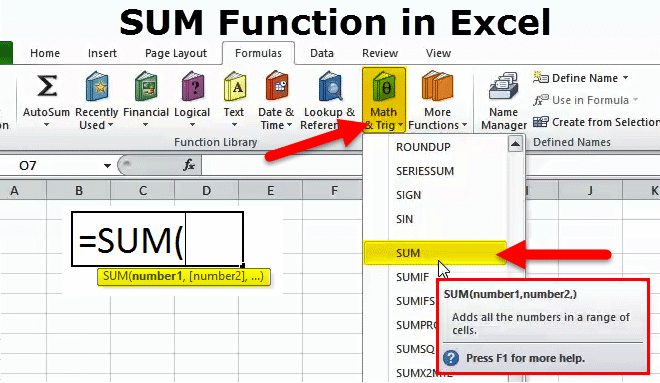

=IF(AND($B2"", $D2""), SUM($B2:$D2), "Value missing")Īnd here's another example of using an advanced SUM formula in Excel: VLOOKUP and SUM formula to total all matching values. In real-life worksheets, the Excel SUM function is often included in bigger formulas as part of more complex calculations.įor example, you can embed SUM in the value_if_true argument of the IF function to add numbers in columns B, C and D if all three cells in the same row contain values, and show a warning message if any of the cells is blank: The below screenshot shows these and a few more SUM formula examples: The Excel SUM function is useful when you need to add up values from different ranges, or combine numeric values, cell references and ranges. In your Excel SUM formula, each argument can be a positive or negative numeric value, range, or cell reference. The first argument is required, other numbers are optional, and you can supply up to 255 numbers in a single formula. The syntax of the SUM function is as follows:
#Excel grandtotal of sums how to#
How to use SUM function in ExcelĮxcel SUM is a math and trig function that adds values. In this case, you can use the Excel SUM function specially designed to add a specified set of numbers. However, if you need to sum a few dozen or a few hundred rows, referencing each cell in a formula does not sound like a good idea.
#Excel grandtotal of sums plus#
Just utilize the plus sign operator (+) like in a normal arithmetic operation of addition. If you need a quick total of several cells, you can use Microsoft Excel as a mini calculator. How to sum in Excel using a simple arithmetic calculation Excel Sum not working - fixes and solutions.How to calculate running total (cumulative sum).How to sum only filtered (visible) cells.How to sum in Excel using simple arithmetic calculations.

It is very simple and straightforward, so even if you are a beginner in Excel, you will hardly have any difficulty in understanding the following examples. If you want a quick sum of certain cells in Excel, you can simply select those cells, and look at the status bar at the bottom right corner of your Excel window:įor something more permanent, use the Excel SUM function. You will also learn how to sum only visible cells, calculate running total, sum across sheets, and find out why your Excel Sum formula is not working. The tutorial explains how to do sum in Excel by using the AutoSum feature, and how to make your own SUM formula to total a column, row or selected range.


 0 kommentar(er)
0 kommentar(er)
